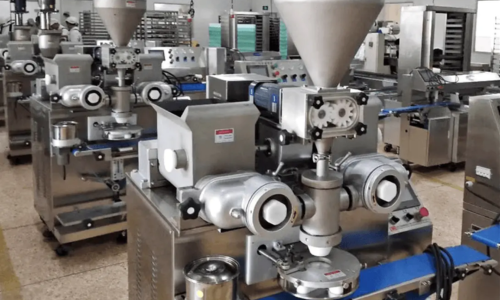The food and beverage industry is undergoing a technological revolution, and at the heart of this transformation lies an unsung hero: the printed circuit board (PCB). From automated processing equipment to smart packaging and quality control systems, PCBs are driving innovation and efficiency across the entire food supply chain. This article explores how electronic PCB assembly is reshaping the industry and what it means for producers and consumers alike.
Device Examples and Equipment Development
PCB-powered devices are becoming ubiquitous in food and beverage production. Some notable examples include:
1. Smart Ovens: Commercial ovens with integrated PCBs allow for precise temperature control, cooking time optimization, and even remote monitoring via smartphone apps.
2. Automated Bottling Lines: PCB-controlled systems manage every step of the bottling process, from filling to capping and labeling, with incredible speed and accuracy.
3. Precision Scales: Modern industrial scales use PCBs to provide highly accurate weight measurements, crucial for recipe consistency and regulatory compliance.
4. Food Safety Sensors: PCB-based sensors can detect contaminants, measure pH levels, and monitor storage conditions in real-time.
5. Packaging Machines: Smart packaging equipment utilizes PCBs to control sealing temperatures, cut lengths, and printing processes.
Equipment development for the food and beverage industry increasingly relies on sophisticated PCB designs to meet the unique challenges of the sector, such as resistance to moisture, heat, and chemical exposure.
The food and beverage industry is undergoing a technological revolution, and at the heart of this transformation lies an unsung hero: the printed circuit board (PCB). From automated processing equipment to smart packaging and quality control systems, PCBs are driving innovation and efficiency across the entire food supply chain. This article explores how PCB electronic assembly is reshaping the industry and what it means for producers and consumers alike.
Device Examples and Equipment Development
PCB-powered devices are becoming ubiquitous in food and beverage production. Some notable examples include:
1. Smart Ovens: Commercial ovens with integrated PCBs allow for precise temperature control, cooking time optimization, and even remote monitoring via smartphone apps.
2. Automated Bottling Lines: PCB-controlled systems manage every step of the bottling process, from filling to capping and labeling, with incredible speed and accuracy.
3. Precision Scales: Modern industrial scales use PCBs to provide highly accurate weight measurements, crucial for recipe consistency and regulatory compliance.
4. Food Safety Sensors: PCB-based sensors can detect contaminants, measure pH levels, and monitor storage conditions in real-time.
5. Packaging Machines: Smart packaging equipment utilizes PCBs to control sealing temperatures, cut lengths, and printing processes.
Equipment development for the food and beverage industry increasingly relies on sophisticated PCB designs to meet the unique challenges of the sector, such as resistance to moisture, heat, and chemical exposure.

Electronics PCB Assembly for Food Industry Applications
The PCB assembly process for food industry equipment requires special considerations:
- Material Selection: Food-grade PCB materials that meet FDA requirements are essential, especially for boards that may come into direct contact with food products.
- Conformal Coating: Many PCBs in food processing equipment receive a protective conformal coating to guard against moisture, chemicals, and cleaning agents.
- High-Temperature Resistance: PCBs in cooking or sterilization equipment must withstand extreme temperatures without degradation.
- Vibration Resistance: Robust solder joints and component mounting are crucial for PCBs in high-vibration environments like mixing or grinding equipment.
- EMI Shielding: Proper shielding techniques prevent electromagnetic interference, which is critical in environments with multiple electronic systems operating simultaneously.
Electronics PCB Assembly for Food Industry Applications
The PCB assembly process for food industry equipment requires special considerations:
- Material Selection: Food-grade PCB materials that meet FDA requirements are essential, especially for boards that may come into direct contact with food products.
- Conformal Coating: Many PCBs in food processing equipment receive a protective conformal coating to guard against moisture, chemicals, and cleaning agents.
- High-Temperature Resistance: PCBs in cooking or sterilization equipment must withstand extreme temperatures without degradation.
- Vibration Resistance: Robust solder joints and component mounting are crucial for PCBs in high-vibration environments like mixing or grinding equipment.
- EMI Shielding: Proper shielding techniques prevent electromagnetic interference, which is critical in environments with multiple electronic systems operating simultaneously.
Electronics PCB Assembly for Food Industry Applications
The PCB assembly process for food industry equipment requires special considerations:
- Material Selection: Food-grade PCB materials that meet FDA requirements are essential, especially for boards that may come into direct contact with food products.
- Conformal Coating: Many PCBs in food processing equipment receive a protective conformal coating to guard against moisture, chemicals, and cleaning agents.
- High-Temperature Resistance: PCBs in cooking or sterilization equipment must withstand extreme temperatures without degradation.
- Vibration Resistance: Robust solder joints and component mounting are crucial for PCBs in high-vibration environments like mixing or grinding equipment.
- EMI Shielding: Proper shielding techniques prevent electromagnetic interference, which is critical in environments with multiple electronic systems operating simultaneously.

PCB Design Tips for Food-Related Devices
When designing PCBs for the food and beverage device and equipment manufacturing industry, engineers should consider:
- Washdown Resistance: PCBs should be designed to withstand regular cleaning and sanitization procedures common in food processing facilities.
- Thermal Management: Efficient heat dissipation is crucial, especially in devices exposed to high temperatures or those that generate significant heat during operation.
- Modular Design: Creating modular PCB designs can simplify maintenance and reduce downtime in food production lines.
- Integration of IoT Capabilities: Incorporating connectivity features allows for remote monitoring and control of food processing equipment.
- Fail-Safe Mechanisms: PCB designs should include redundancies and safety features to prevent equipment failures that could compromise food or worker safety.
PCBs for Automated Processing Equipment
Automated processing equipment is a game-changer in the food and beverage industry, and PCBs are at the core of this automation revolution:
- Precision Control: PCBs enable exact control over processing parameters such as temperature, pressure, and flow rates, ensuring consistent product quality.
- Real-Time Monitoring: Integrated sensors connected to PCBs provide continuous data on equipment performance and product characteristics.
- Adaptive Systems: Advanced PCB designs allow processing equipment to adjust parameters in real-time based on input from various sensors.
- Energy Efficiency: Smart PCB-controlled systems can optimize energy usage, reducing costs and environmental impact.
- Traceability: PCBs in processing equipment can log data for quality control and regulatory compliance, enhancing traceability throughout the production process.
PCBs for Automated Processing Equipment
Automated processing equipment is a game-changer in the food and beverage industry, and PCBs are at the core of this automation revolution:
- Precision Control: PCBs enable exact control over processing parameters such as temperature, pressure, and flow rates, ensuring consistent product quality.
- Real-Time Monitoring: Integrated sensors connected to PCBs provide continuous data on equipment performance and product characteristics.
- Adaptive Systems: Advanced PCB designs allow processing equipment to adjust parameters in real-time based on input from various sensors.
- Energy Efficiency: Smart PCB-controlled systems can optimize energy usage, reducing costs and environmental impact.
- Traceability: PCBs in processing equipment can log data for quality control and regulatory compliance, enhancing traceability throughout the production process.

Impact on the Food and Beverage Industry
The integration of advanced PCB technology is transforming the food and beverage industry in several key ways:
- Increased Efficiency: Automated, PCB-controlled systems significantly boost production speeds and reduce labor costs.
- Improved Food Safety: Real-time monitoring and precise control enabled by PCBs help maintain strict hygiene standards and reduce the risk of contamination.
- Enhanced Quality Control: PCB-based sensors and control systems ensure consistent product quality and enable rapid adjustments when needed.
- Sustainability: Smart, PCB-powered equipment optimizes resource usage, reducing waste and energy consumption.
- Product Innovation: PCB technology enables the development of new food processing techniques and innovative packaging solutions for companies.
Conclusion
PCB electronic assembly is quietly revolutionizing the food and beverage industry. From the farm to the factory floor, and all the way to the consumer’s table, PCBs are enabling smarter, safer, and more efficient food production processes.
The future of food production will undoubtedly see even greater integration of PCB technology. We can expect to see more IoT-enabled devices, artificial intelligence-driven processing systems, and advanced quality control mechanisms, all powered by increasingly sophisticated PCBs.
For food and beverage companies looking to stay competitive in this rapidly evolving landscape, embracing PCB-based technologies is no longer optional—it’s essential. By leveraging the power of modern PCB electronic assembly, businesses can improve their operations, ensure product quality, and meet the ever-growing demands of consumers for safe, high-quality food products.
As consumers, the next time we enjoy a perfectly packaged snack or a precisely prepared beverage, we might take a moment to appreciate the intricate PCBs working behind the scenes to bring that product to our tables. The future of food is here, and it’s powered by printed circuit boards.
BENCOR is not just a manufacturing partner; We are your ally in driving innovation and excellence in the food and beverage industry. With our experience, expertise, and commitment to quality, we ensure that your products incorporating printed circuit boards, electronic cables, and electric components are produced reliably and to the highest standards across the entire PCB electronic assembly process





